| DC47884 |
TLR4-IN-C34-C2-COOH
Featured
|
TLR4-IN-C34-C2-COO is a linker that incorporates TLR4 inhibitor TLR4-IN-C34. TLR4-IN-C34 inhibits TLR4 in enterocytes and macrophages, and reduces systemic inflammation in mouse models of endotoxemia and necrotizing enterocolitis. |
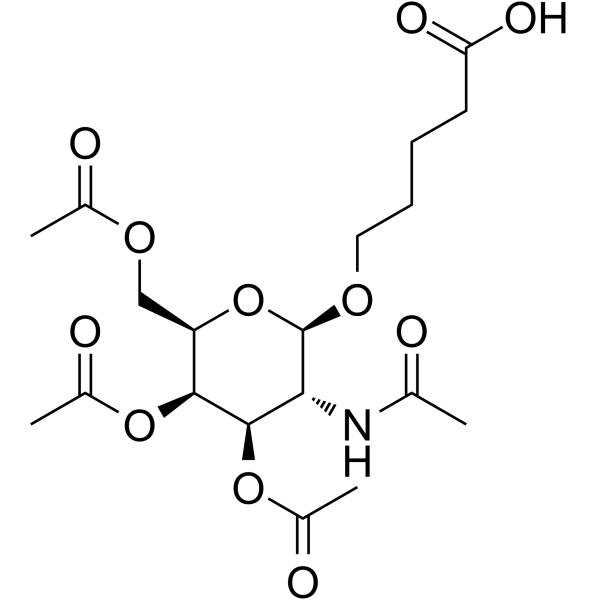
|
| DC48021 |
CL097
Featured
|
CL097, a potent TLR7/8 agonist, induces pro-inflammatory cytokines in macrophages. CL097 induces NADPH oxidase priming, resulting in an increase of the fMLF-stimulated ROS production. |

|
| DC48401 |
TLR7/8 agonist 4 hydroxy-PEG10-acid hydrochloride
Featured
|
TLR7/8 agonist 4 hydroxy-PEG10-acid hydrochloride (compound 9) is a drug-linker conjugate for ADC with potent antitumor activity by using TLR7/8 agonist 4, linked via the cleavable ADC linker hydroxy-PEG10-acid.
|
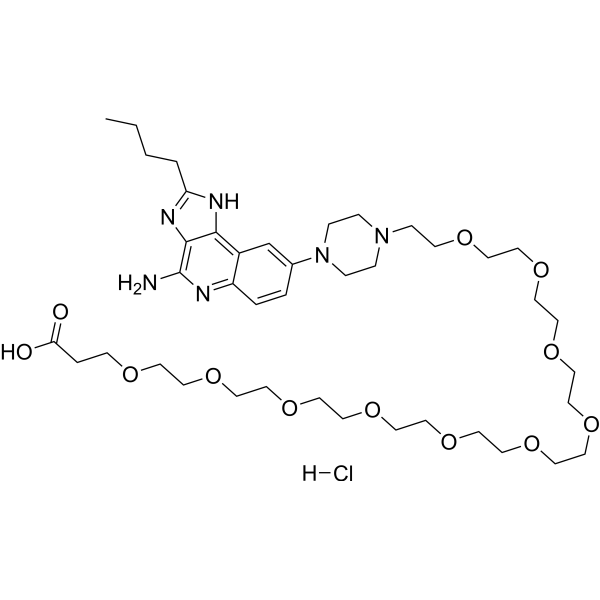
|
| DC49675 |
D18
Featured
|
D18 is an immune modulator. D18 acts as a TLR7/8 dual agonist (EC50=24 nM for hTLR7 and 10 nM for hTLR8, respectively). D18 increases PD-L1 expression through epigenetic regulation, thus sensitizing tumors to PD-1/PD-L1 blockade. D18 is a ADC cytotoxin uesd for the systhesis of ADC HE-S2. |

|
| DC50032 |
CU-CPT17e
Featured
|
CU-CPT17e shows strong NF-κB activation in TLR3, TLR8 and TLR9 HEK293 cells with EC50 values of 4.80±0.73, 13.5±0.58 and 5.66±0.17 μM, respectively. CU-CPT17e significantly improves the activity with 13.9±0.9 fold of NF-κB activation and an EC50 value of 4.8±0.7 μM. CU-CPT17e inhibits the proliferation of HeLa cancer cells by triggering apoptosis and arresting the cell cycle at the S phase. The induction of apoptosis by CU-CPT17e in HeLa cells is investigated. HeLa cells are cultured with increasing concentrations of CU-CPT17e or poly I:C or blank control (DMSO) for 24 h. Treatment with CU-CPT17e for 24 h at different concentrations (10 to 40 μM) results in an elevation of apoptotic cell population ranging from 10% to 17%, which is more effective than poly I:C at 5 μg/mL. These results suggest that the antiproliferative activity of CU-CPT17e against HeLa cells might result from its ability to directly induce apoptosis[1]. |

|
| DC70332 |
CU-CPD107
Featured
|
CU-CPD107 is a TLR8-specific small molecule with unique synergistic agonist activities in the presence of ssRNA, but inactive without the aid of ssRNA.CU-CPD107 significantly inhibited of R848-induced signaling in HEK-Blue hTLR8 cells with an IC50 of 13.7 uM.CU-CPD107 only inhibited synthesized small-molecule agonist-induced TLR8 signaling without affecting other TLRs.CU-CPD107 synergistically increased IFN-β, TNF-α, IL-1β, IL-6, and IL-8 mRNA expression levels in the presence of 5 μg/ml ssRNA40 in HEK-Blue hTLR8 cells, whereas CU-CPD107 alone did not. CU-CPD107 only activated TLR8-mediated signaling in the presence of ssRNA.CU-CPD107 showed no pure agonistic activity, addressing a major challenge that has existed for previous TLR7 and TLR8 agonists as vaccine adjuvants or antiviral drugs. |
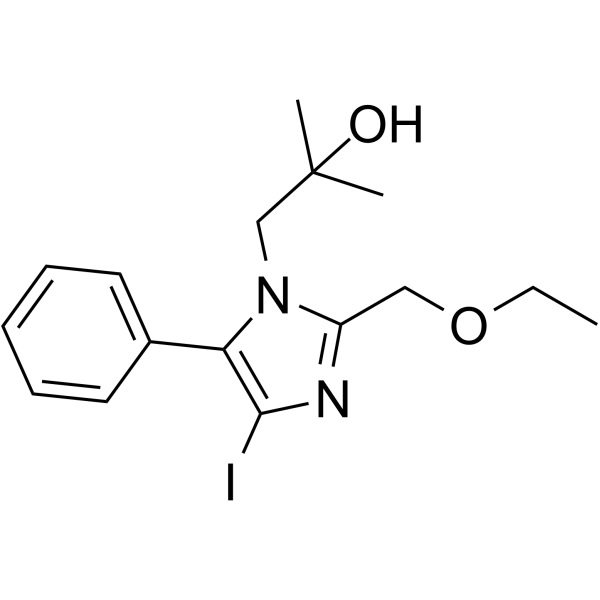
|
| DC71531 |
ODN 1826 |
ODN 1826, a class B ODN (oligodeoxynucleotide), is a TLR9 agonist. CpG ODN 1826 is an excellent immunostimulator that induces NO and iNOS production in the murine model. CpG ODN 1826 enhances cell apoptosis. ODN 1826 sequence: 5’-tccatgacgttcctgacgtt-3’. |

|
| DC60236 |
Imiquimod hydrochloride
Featured
|
Imiquimod hydrochloride (R 837 hydrochloride), an immune response modifier, is a selective toll like receptor 7 (TLR7) agonist. Imiquimod hydrochloride exhibits antiviral and antitumor effects in vivo. Imiquimod hydrochloride can be used for the research of external genital, perianal warts, cancer and COVID-19. |
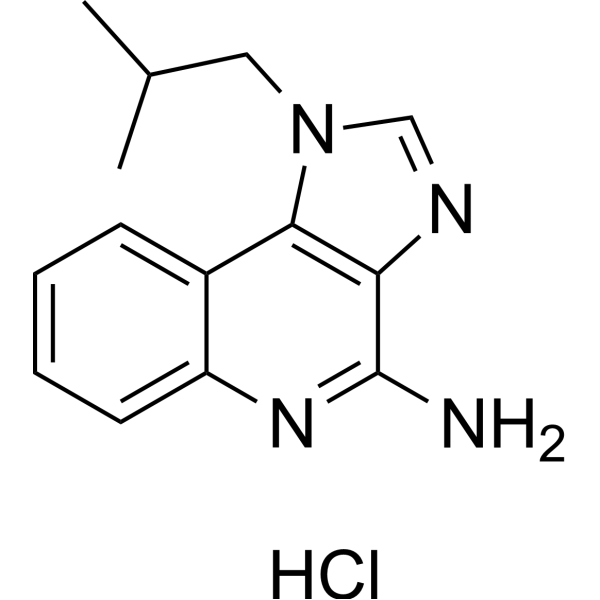
|
| DC71786 |
ODN 2395 |
ODN 2395 is a C class oligodeoxynucleotide and can be used as vaccine adjuvant. ODN 2395 is also a TLR9 agonist. Sequence: 5'-tcgtcgttttcggcgc:gcgccg-3'. |

|
| DC71789 |
ODN D-SL01 |
ODN D-SL01, a class B CpG ODN (oligodeoxynucleotide), is a TLR9 agonist. ODN D-SL01 has strong immunostimulatory activity in a variety of vertebrate species and has anticancer activity. ODN D-SL01 sequence: 5'- T-C-G-C-G-A-C-G-T-T-C-G-C-C-C-G-A-C-G-T-T-C-G-G-T-A-3'. |

|
| DC72904 |
ODN 4084-F |
ODN4084-F is a class B (‘broadly-active’) inhibitory ODN. ODN 4084-F is potent inhibitor of TLR9-induced B cells and macrophages. |

|
| DCC3219 |
Malp-2
Featured
|
Toll-like receptor 2/6 (TLR-2/6) agonist, regulating Lcn2 gene, promoting collateral growth |

|
| DCC4810 |
Smu-z1
Featured
|
Novel potent TLR1/2 Specific Agonist, Suppressing Leukemia Cancer Cell Growth by Stimulating Cytotoxic T Lymphocytes |

|
| DCC4995 |
Szu101
Featured
|
Novel TLR7 agonist via immune response induction and tumor microenvironment modulation |

|
| DCC5384 |
Vb-201
Featured
|
Novel anticryptosporidial agent, acting as a toll-like receptor-2 (TLR2) antagonist |

|
| DC73561 |
E104
Featured
|
E014 is a potent, selective TLR7 agonist with EC50 of 69 nM in Ramos Blue reporter assays, >500-fold selective for TLR7 over TLR8. |

|
| DC73563 |
E6742
Featured
|
E6742 (E6742) is a potent, selective, dual TLR7/8 inhibitor with binding Kd of 1.7 uM/37 nM in ITC assays, respectively, inhibits TLR7/8 agonist CL097 induced reporter activation with IC50 values of 22, 68, and 3.0 nM for hTLR7, mTLR7, and hTLR8, respecti |

|
| DC66322 |
WAY-327512
Featured
|
activate TLR8-dependent NF-kB signaling |
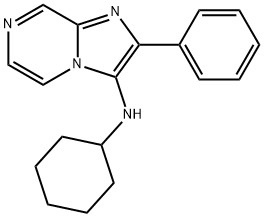
|
| DC66456 |
TLR7/8 agonist 1
Featured
|
TLR7/8 agonist 1 is a toll-like receptor (TLR7)/TLR8 dual-agonistic imidazoquinoline. |
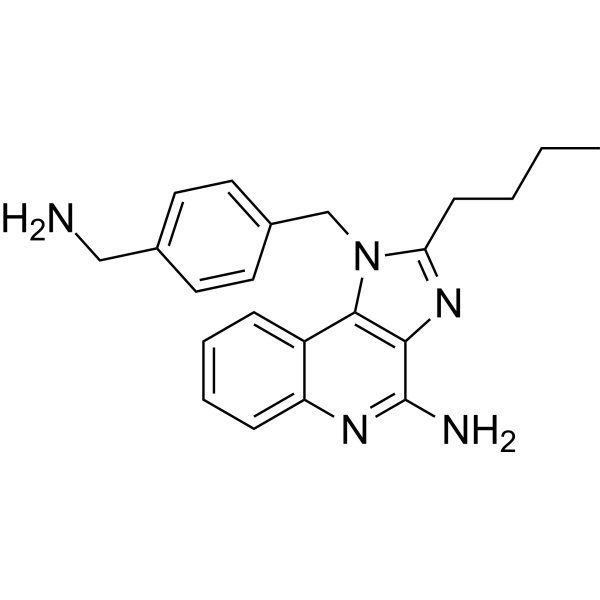
|
| DC67223 |
Monophosphoryl Lipid A-12
Featured
|
Monophosphoryl Lipid A-12 (MPLA-12) is a biochemical reagent. |
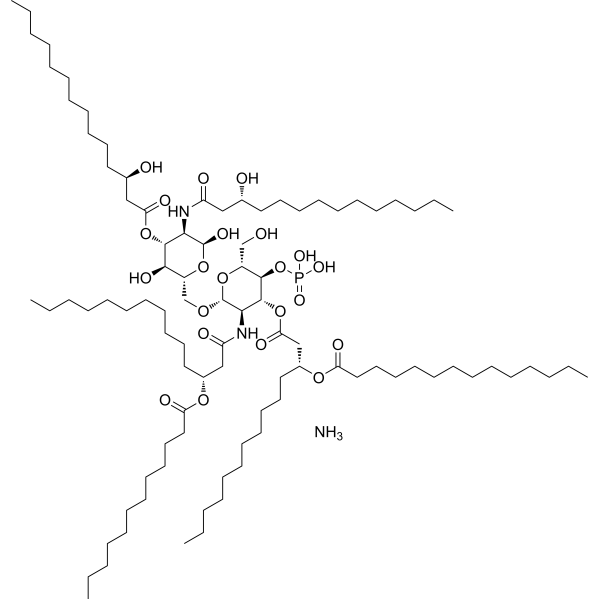
|
| DC67224 |
3D-Monophosphoryl Lipid (14)
Featured
|
3D-Monophosphoryl Lipid (14) (3D-MPL (14)) is a biochemical reagent. |
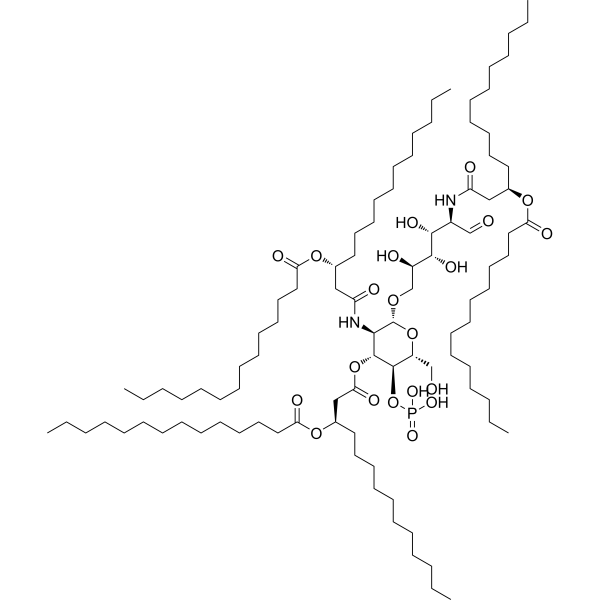
|
| DC67225 |
3D-MPL(12;16)
Featured
|
3D-Monophosphoryl Lipid (12,16) (3D-MPL (12,16)) free acid is a TLR agonist that can be used as a vaccine adjuvant to enhance the immunogenicity of vaccines[1]. |
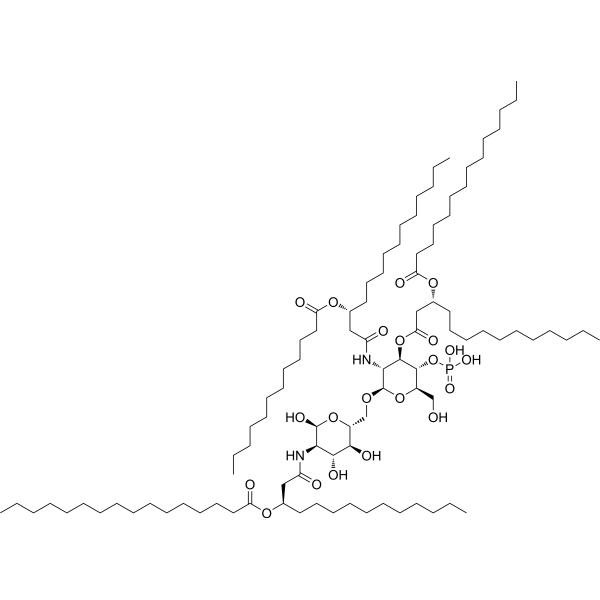
|
| DC67226 |
3D-MPLA
Featured
|
3D-Monophosphoryl Lipid A-5 (3D-MPLA-5) is a TLR agonist that can be used as an adjuvant for vaccines to enhance their immunogenicity. |
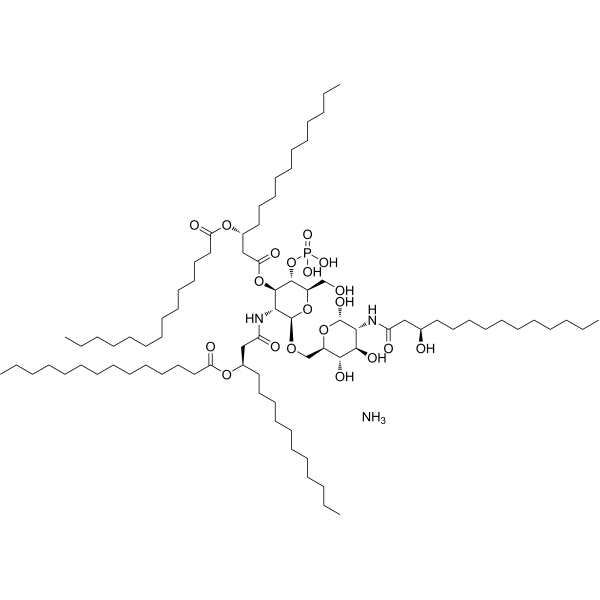
|
| DC67227 |
UM-3006
Featured
|
UM-3006 is a highly efficient TLR7/8 agonist that enhances immune responses by activating the TLR signaling pathway. UM-3006 holds significant research and application potential in the fields of vaccine adjuvants and immune diseases. |
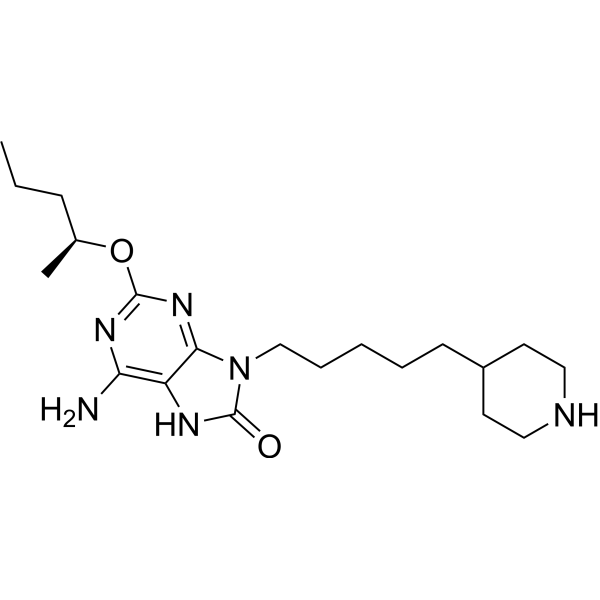
|
| DC67230 |
AYK005
Featured
|
AYK005 is a TLR7/8 immunologic adjuvant. |
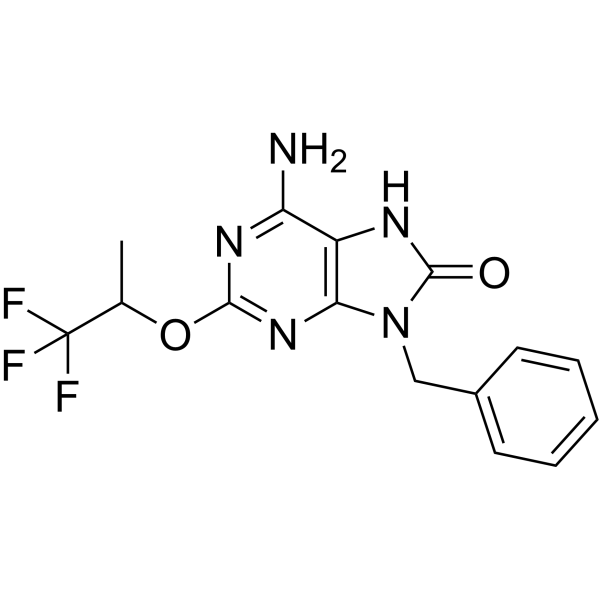
|
| DC67231 |
AYK004
Featured
|
AYK004 is a TLR7/8 agonist that enhances immune responses by activating the TLR signaling pathway. AYK004 is an adenine derivative with a favorable hydrophilic-lipophilic balance, which improves the loading capacity and stability in immunoadjuvant systems such as liposomes, while reducing the side effects of the immunoadjuvant system in systemic immunity . |
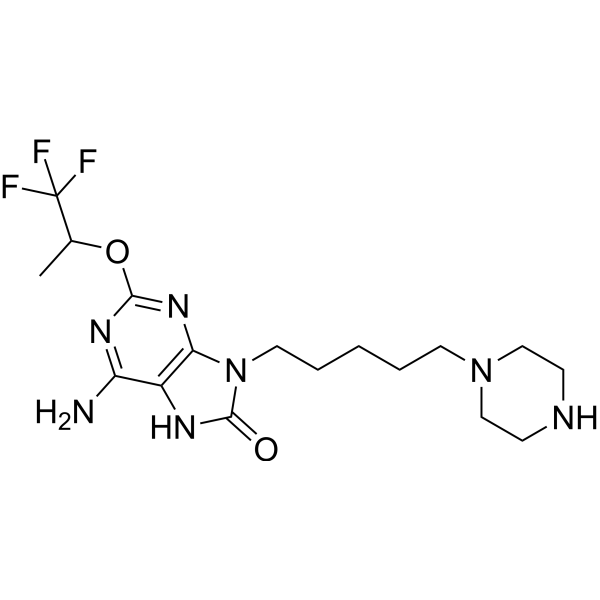
|
| DC67232 |
AYK004-B1
Featured
|
AYK004-B1 is a TLR7 agonist (EC50=0.2265 nM). AYK004-B1 can be used to prepare immune adjuvants. |
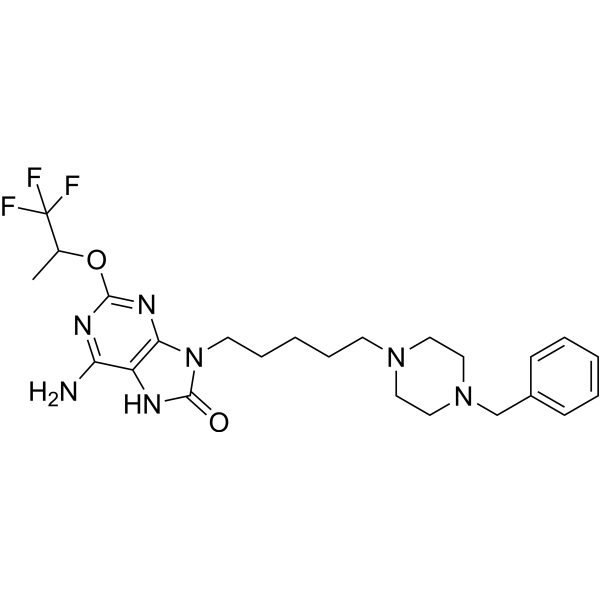
|
| DC67233 |
AYK004-C1
Featured
|
AYK004-C1 is a TLR agonist. AYK004-C1 can be used to prepare immune adjuvants. |
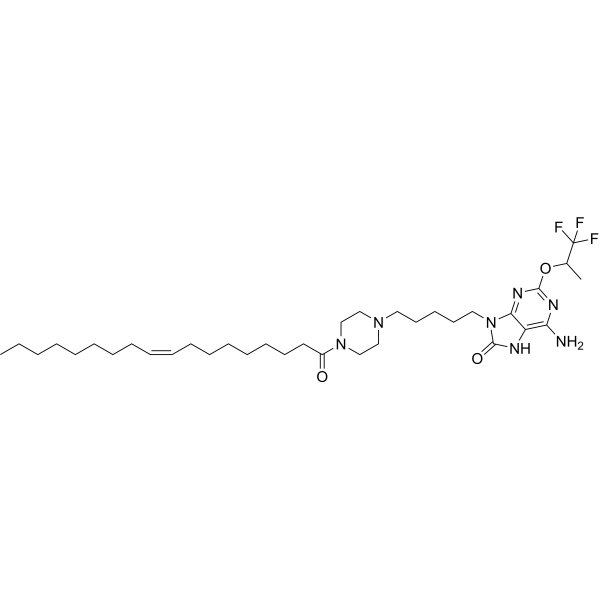
|
| DC67234 |
CPG-1018
Featured
|
|

|
| DC67235 |
CPG 7909
Featured
|
|

|





























